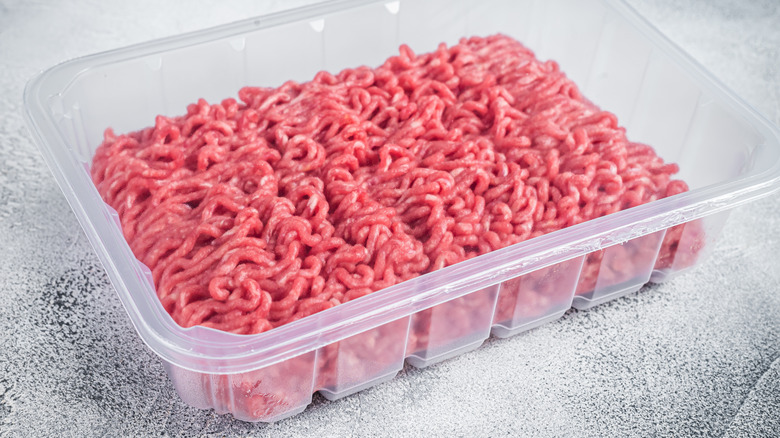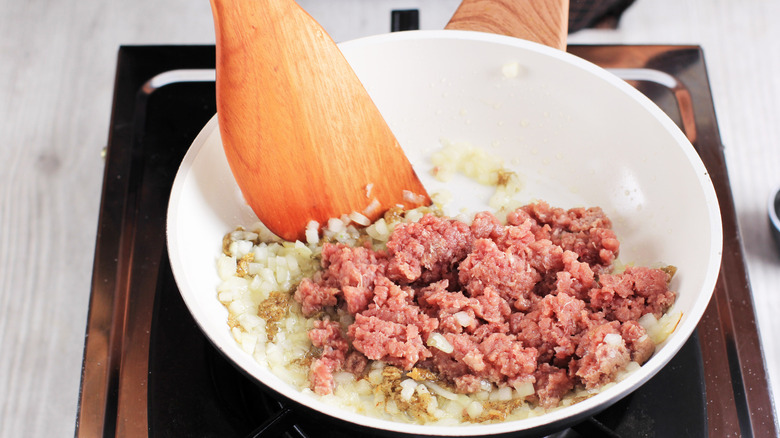Why You Should Pay Attention To Fat Percentages When Cooking Ground Beef
Whether you are whipping up homemade burgers, meatballs, or a big vat of chili, there's one common ingredient you'll need: ground beef. When you walk through the meat section at the grocery store, there are a bunch of types of ground beef on the shelves. It can be overwhelming to determine what to choose. Of course, you know to look at the expiration date (and the price, if you are shopping on a budget) — but what about the various different percentages dotting the vacuum-sealed packages? How do you know which is best?
Many of us choose the percentage based on our own diets. For example, if you are someone watching your fat content or calories, you likely opt for the higher ratios of meat to fat (like 93/7 or 96/4), which are leaner. But once you get home from the store, you probably never think about the percentage again — and that's where you are wrong. The fattiness of your ground beef makes a big difference in how it cooks.
Different fat percentages work better with certain dishes
Spoiler alert: Not all ground beef is created equal for every recipe. For example, that pack of 80/20 ground beef sitting in the refrigerator is not ideal for every single meat dish you plan on making this week. According to The Kitchn, burgers work best with beef that has a higher fat content — like said 80/20 — so your patties wind up juicy instead of dry when they come off the grill. If you choose anything higher in fat, however, be warned — Schweid and Son cautions it can make your burgers greasy.
On the other hand, meatloaf requires even fattier beef — like 70/30 — since it's cooked at high heat for a long time. The extra fat prevents it from drying out in the oven. Southern Living says the same rule of thumb applies to meatballs. For the most tender spheres, opt for 70/30 or 80/20 ground beef.

